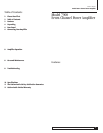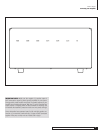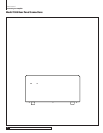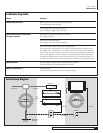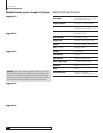
10
Outlaw Audio
Owner’s Manual
Model 7900 Specifications
Potential Ground Loops in a Complex A/V System
Suggestion #1:
To determine if a cable TV connection is responsible for
the hum, first turn all components off. Disconnect the cable TV feed to your
system at the first place where it connects to your components. Alternatively,
disconnect the cable TV wire where it is connected at the wall outlet. Turn
your system back on, and check if the hum has disappeared. If removing
the cable TV feed has eliminated the hum, you will need to insert a Ground
Loop Isolator before reconnecting the cable TV feed, or contact your cable TV
operator to see if they can better isolate your cable feed.
Suggestion #2:
Turn off all components in your system, then disconnect
the input cables at the amplifier. Turn the amplifier back on. If the hum
disappears, the fault may be in the input cables used. Try reconnecting each
cable separately to determine if one or more of them is responsible for the
hum. Replace any suspect cable. Make sure that the cables are not running
next to any AC power cords and are properly shielded. If the hum returns
after the cables are tested and/or changed and re-connected, the problem
may be caused by your processor, receiver or preamplifier.
Suggestion #3:
Poor grounding of the electrical system in your home
may also cause ground loop problems, particularly when there are mul-
tiple components with three-prong, grounded power cords. Try unplugging
these components one at a time, and see if one or all of them is causing the
problem. The ultimate solution to this type of problem is to re-wire your
house with an isolated, star-type grounding configuration. We recognize,
however, that this may be impractical and expensive. In some cases, the use
of an approved AC Power Isolation Transformer of sufficient capacity may
solve this problem.
Warning: if you suspect that the grounding system in your home’s
electrical wiring is causing the hum problem, it is important that you do
not make any changes to the wiring yourself. Only a licensed electrician
should make any changes to household wiring, and they must be made
in full compliance with all local building, safety and electrical codes.
Suggestion #4:
Faulty earth grounds may also cause hum in your home’s
electrical system. In the past, cold water pipes were often used for the earth
ground, so it is important to make sure that your ground connection is still
valid and has not become loose or corroded. The cold water pipe method
may no longer be valid in some locations due to requirements that the water
meter be isolated from the water mains with a length of PVC pipe, thus inter-
rupting the ground circuit. The safest, and most reliable approach may be
to provide your own ground. This can be accomplished by having a licensed
electrician drive at least five feet of copper-jacketed steel grounding rod into
the earth, and using that for your grounding connection.
Suggestion #5:
If you have hum in your video display device (bars that
roll up through the image at 12-14 second intervals), it may be related to the
hum you are also experiencing in your audio system. The previous sugges-
tions may also help with this. If not, try isolating the ground in the display’s
video signal cable with a base-band video isolation transformer, such as the
Jensen VB-1BB.
If the hum persists after all of the above suggestions have been tried, contact
the Outlaw Audio customer service department for assistance.
Model 7900 Specifications
Power Output 7 x 300 watts @ 8 ohms, FTC: 20 - 20kHz,
0.05% THD, All Channels Driven
Frequency Response 20Hz -20kHz +/- 0.1dB at rated output
Total Harmonic Distortion (THD) Less than 0.05% at rated output,
all frequencies, less than 0.005% at 1 kHz
Intermodulation Distortion (IMD) Less than 0.03% from 250mV
to full rated FTC power
Power Bandwidth 5Hz - >100kHz +0/-3dB
Damping Factor Greater than 400 from 10Hz to 400Hz
Crosstalk Greater than -100dB from 20Hz to 20Khz
Gain (XLR and RCA) Voltage gain of 28dB
Slew Rate 50v/Microsecond
Input Impedance <10k ohms
Input Sensitivity 1.95 Volts for Full Rated Output
Remote Trigger Voltage 3 - 24 Volts DC at 5mA or greater
Dimensions (HxWxD): 9.5" x 17.2" x 19.5"
Weight 145 lbs
Power Requirements 2 x115VAC, +/- 3%, 60Hz
1440 watts x 2 = 2880 watts maximum





